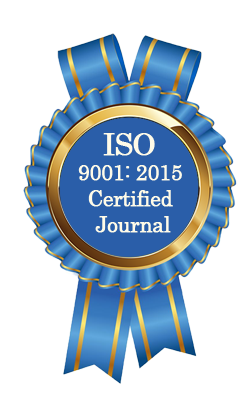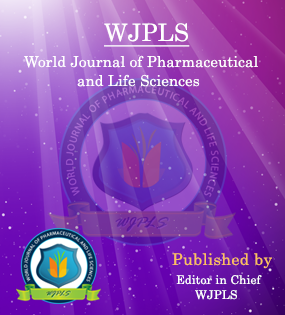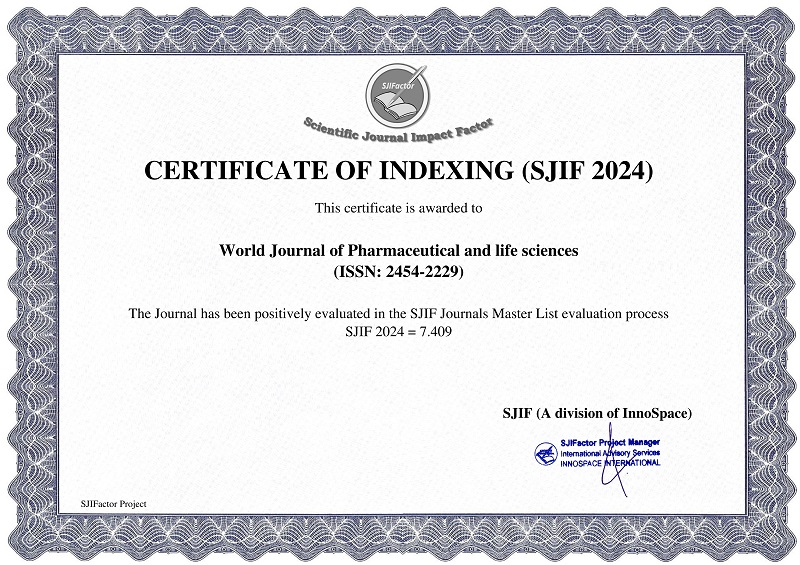Abstract
BIOCHEMICAL STUDIES OF THE WHEAT (TRITICUM AESTIVUM L)
Mohammed Meeran Mohiuddin*, Ayesha Fatima, Sameena Begum, Rizwan Mohammed Rasheed Khan
ABSTRACT
Tricin (5,7,4'-trihyroxy-3',5'-dimethoxyflavone), a naturally occurring compound, is a characteristic constituent of the grass family, including cereal grain plants, and has been isolated from wheat. Apart from being a powerful antioxidant, antimutagenic, and anti-inflammatory agent, tricin has been considered as an efficient chemopreventive agent in growth inhibition of human malignant breast tumour cells and colon cancer cells. However, its high commercial price as a pure compound may hinder further experimentation. Wheat is considered one of the main staple foods in Canada and worldwide, and is the most widely adapted crop to abiotic stresses. The main aim of this study is to investigate the effects of abiotic stress factors, such as cold, drought, and salt treatments, among others, on the biosynthesis and accumulation of tricin in different parts of wheat (Triticum aestivum L), with aim of defining an optimum source for tricin production in this important crop. This thesis consists of four research chapters. The first chapter focuses on an investigation of the phenolic profile of two varieties of wheat (Triticum aestivum L) leaves grown under normal and cold stress conditions. The leaf ‘phenolomes’ were established for two varieties: the winter wheat (Triticum aestivum L. var Claire) and spring wheat (Triticum aestivum L. var, Bounty) using a combination of HPLC-ESI-MS techniques. Phenolic compounds accumulated at a higher level in the Claire than in the Bounty variety, and detected in significant amounts in the apoplast compartment. The accumulation of a mixture of beneficial flavonoids in iv cold-acclimated wheat leaves attests to its potential use as an inexpensive supplement of a health-promoting component to the human diet. The second chapter describes the distribution of tricin in different parts of wheat with the aim to designate a rich source for its utilization. Winter wheat husk was identified as the most valuable part. Its tricin content is considered the highest in any plant materials suggesting the use of winter wheat husk as a good source of tricin. Moreover, the potential anticancer effect of tricin on two cancer cell lines was evaluated where it was revealed to have a selective anticancer effect. In the third chapter, the selective anticancer effect of several methylated phenolic and flavonoids compounds were tested in vitro on cell cultures, using a LDH-spectrophotometer method to assess the viability of the cell lines. Several candidates were found to possess a remarkable antitumor activity on these malignant cell lines, such as trimethyltricetin, a tricin derivative that exhibited a superior selective activity against human adenocarcinomic alveolar basal epithelial cells (A-549). In the last chapter, the biosynthesis of tricin is discussed. The expression and the enzyme activity of TaOMT2, the enzyme that catalyzes the methylation of tricetin to tricin, were measured at different wheat developmental stages and in response to different abiotic stresses such as cold,salt and drought. The significant accumulation of tricin in the inflorescences suggests that tricin may play a role in protecting the seeds against biotic and abiotic stresses.
[Full Text Article] [Download Certificate]WJPLS CITATION 
| All | Since 2020 | |
| Citation | 590 | 424 |
| h-index | 12 | 10 |
| i10-index | 17 | 14 |
INDEXING
NEWS & UPDATION
BEST ARTICLE AWARDS
World Journal of Pharmaceutical and life sciences is giving Best Article Award in every Issue for Best Article and Issue Certificate of Appreciation to the Authors to promote research activity of scholar.
Best Article of current issue
Download Article : Click here





